Recent Storm Damage Posts
Spring is near... but stay prepared for late winter storms!
2/13/2025 (Permalink)
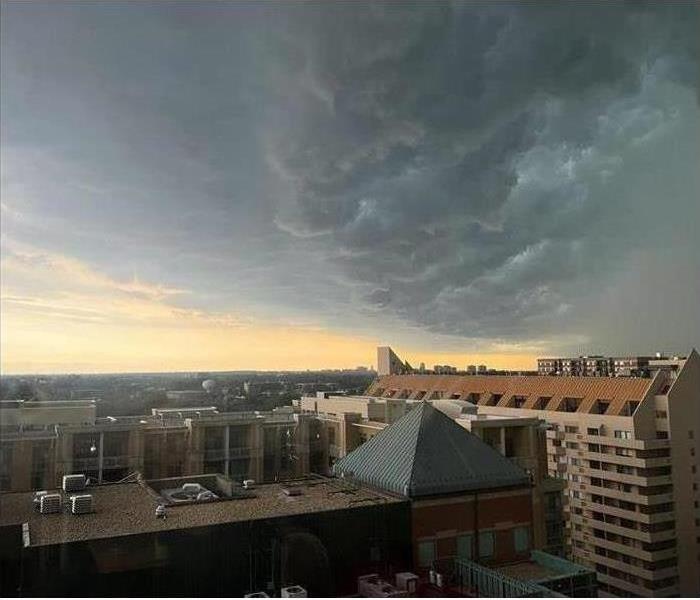 Blue sky and balmy weather are nice, but stay prepared for late-winter surprises!
Blue sky and balmy weather are nice, but stay prepared for late-winter surprises!
Balmy one week, freezing temps and snow the next!
But that's the norm in DC, Virginia and Maryland! Sixty degrees today, frigid to near-freeze temperature tomorrow. To wear a sweater or not. To bring in the plants or not…
Spring weather can be unpredictable, as many of us here in the Washington, D.C. region have experienced a time or two. Remember the heavy April snowfall over a decade ago? And the wind gusts of 20-30+ mph every now and then?
While we can’t predict when severe weather hits, we can always plan for those unexpected storms to minimize injury to ourselves and damages to our properties. A viable plan of action for storms, floods, tornadoes, even fires, can save lives and costly repairs in the aftermath of severe weather that can occur, even within the same day.
Mark Twain said it best: “In the spring I have counted one hundred and thirty-six kinds of weather inside of four and twenty hours.”
Preparing an emergency kit to keep on hand is a great start to advance planning for storms. Some items to include, as suggested by the Centers for Disease Control and Prevention, are:
- A battery-operated flashlight, a battery-operated NOAA Weather Radio, and extra batteries for both
- An emergency evacuation or shelter plan, including a map of your home and routes to safety from each room
- A list of important personal information, including:
- telephone numbers of neighbors, family and friends
- insurance and property information
- telephone numbers of utility companies
- medical information
- A 3–5 day supply of bottled water and nonperishable food
- Personal hygiene items
- Blankets or sleeping bags
- A first-aid kit, which may include:
- non-latex gloves
- assortment of adhesive bandages
- antibiotic ointment
- sterile gauze pads in assorted sizes
- absorbent compress dressings
- tweezers
- scissors
- adhesive cloth tape
- aspirin packets
Being prepared & proactive for storms and severe weather can save lives and minimize costly repairs to damaged property. Oftentimes we have little if any time to prepare for an approaching storm. For families with young children, a mock emergency drill may be a fun yet helpful activity. Show them where to go; where emergency supplies are stored; and make sure everyone in the family knows where & how to turn off the water, gas and electricity in your home.
Preparedness and swift response may save a life or two!
When all’s settled and you find your damaged properties needing cleanup & restoration, call us – SERVPRO Team Gutierrez of Rockville-Olney and Silver Spring North – at 301-340-1313.
We are the area’s water & storm damage restoration experts and are always “Faster to any size disaster.” Large or small, we will restore your water-damaged property, residential or commercial, with efficiency and detail.
Wintry weather is here. Are you prepared?
12/27/2024 (Permalink)
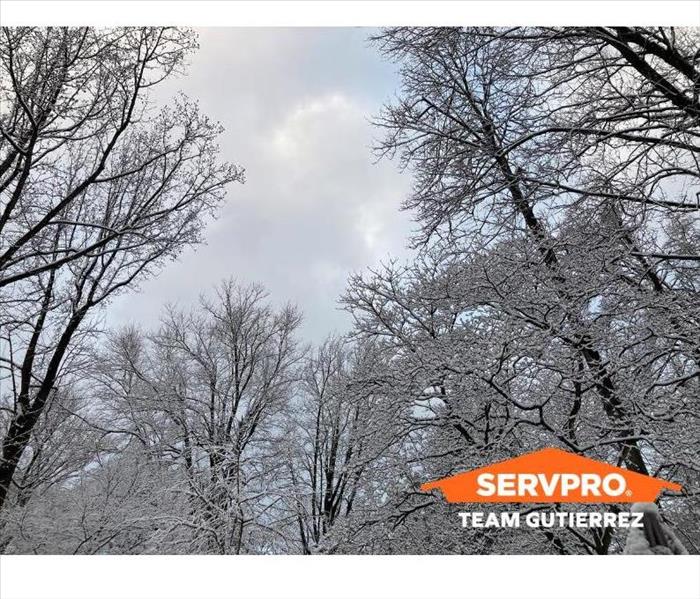 Take these simple steps to ensure your home is ready for winter weather.
Take these simple steps to ensure your home is ready for winter weather.
Most of us would probably rather hibernate for the winter than deal with any of the home maintenance tasks that come along with owning property during the wintry months.
SERVPRO of Rockville-Olney and SERVPRO of Silver Spring North would like to remind you that your winter will be much better if you take steps now to prevent any winter weather-related disasters or accidents happening in & around the home!
Here are some helpful tips for winter preparedness in the coming weeks...
- Keep cabinet doors open during cold spells. This allows warm air to circulate around pipes that could freeze.
- Keep a slow trickle of water flowing through faucets, especially if the pipes for faucets run through unheated or uninsulated areas of your home.
- Consider shutting off outdoor faucets. Find the shut-off valve in the basement or crawl space and turn it to "off."
- If you follow the previous step, then open the outdoor faucet to help ensure it drains completely and the inner valve is shut off.
- Ensure gutters are clean and secure. Leaves and debris accumulate, causing a damming effect on gutters, which could lead to roof problems and water damage.
- Proper maintenance of your furnace can help reduce the risk of "puff backs." A puff back occurs when your oil burner backfires and shoots smoke and soot into your home or business. Puff backs can cause anything from minor inconvenience to severe damage to your property and heating system.
Don't overlook these tips as you head into the winter months and holiday season. Keep your home safe and secure so that you can focus on staying warm and enjoying the season with your loved ones this winter!
In the unfortunate event you have storm, water or smoke damage, restoration help is a phone call away: Team Gutierrez of SERVPRO of Rockville-Olney & Silver Spring North 301-340-1313.
Some Things to Know Before Winter Storm
12/20/2024 (Permalink)
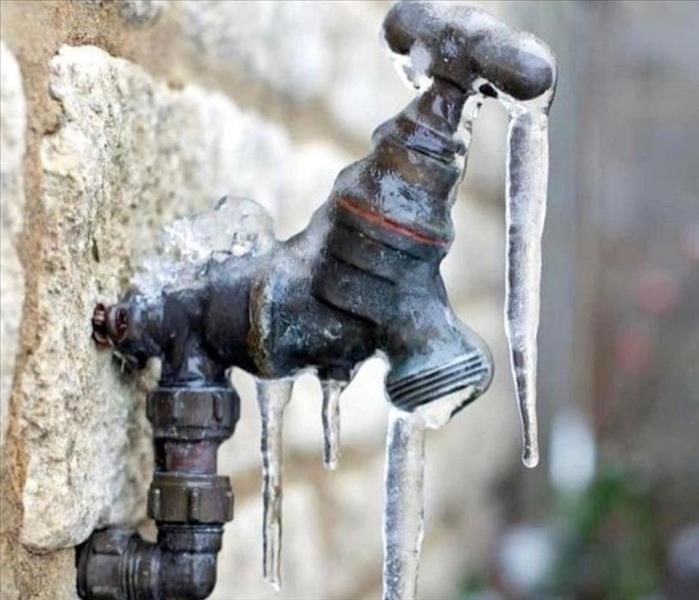 Follow these tips to prepare for a winter storm.
Follow these tips to prepare for a winter storm.
Winter storms can cause a lot of damage! Not only is your home or business at risk, but also your health, the roads and your vehicle. Unlike storms occurring during the warmer seasons, winter storms can bring freezing rain, snow, ice, and intense, cold winds.
It’s important to make sure your home or office is properly insulated. Caulking and weather-stripping doors and windows will keep cold air from seeping into your property. Also consider installing a storm door. That will provide an extra layer of insulation and protection.
Also remember your pipes! To keep them from freezing, insulate them by wrapping them in old newspaper, for example. Then, cover the newspaper with plastic to keep any moisture out.
One of the most important things to keep in mind, especially during the coldest time of the year, is carbon monoxide. During a snowstorm in particular, it’s safe to assume your windows and doors are tightly shut. It’s great that snow and frigid air can’t make their way into your home, yet carbon monoxide can begin poisoning your air by quickly filling up the confined air. Carbon monoxide can be released from the gas of generators, stoves and other equipment.
Furthermore, having your car run to warm up for example, or sitting in it for heat purposes, will result in the release of carbon monoxide. If the vehicle is in an enclosed or poorly ventilated area, the buildup can be deadly. It’s odorless, silent and quick to poison.
Of course snowstorms also have a direct impact on the structure of your home. Heavy snow can cause your roof to weaken, possibly resulting in its collapse. Snowstorms can also cause windows to break.
Be careful of falling trees. Before cold temperatures set in, check your property for any dying trees or breaking branches. It’s a good idea to call a professional company if anything seems questionable. You will want to get any trees or branches removed that might put your property at risk. Once the snow begins falling, its weight can easily snap a branch or even an entire tree that can land on your home or office, which in turn would create an opening for snow, rain, or ice to fall directly in your home.
Snowstorms can also affect your & others' health, including neighbors, homeless members of your community, and animals including pets. Health risks include hypothermia, heart attacks from overexertion, and frostbite. A common result of a winter storm is losing heat and communication services. Especially for the elderly and young children, losing heat can be life-threatening.
Additionally, if communication services are temporarily out and an emergency occurs, there is basically no way of getting help. As winter is quickly approaching, we encourage you to purchase a mobile phone from a reliable and trusted carrier if you currently only have a landline. We also encourage you to check on anyone you might see as at-risk.
If you know a winter storm is approaching, make sure to warn members of your community, such as an elderly neighbor, who may have not heard, or notify a local homeless shelter if you see someone you think would benefit from their services.
Lastly, make sure you are dressed warmly, covering yourself in winter gear from head to toe. Warm gloves and socks are essential as frostbite is most common on fingers and toes. You should stay indoors as much as possible and be sure to stay off the road. The road is an extremely dangerous place to be during a snowstorm. These weather conditions can make it nearly impossible to drive, and the last place you want to be is sitting on the side of a road as the snow on the ground grows higher.
Keep yourself safe and let’s keep everyone else safe and warm this winter!
In the unfortunate event you have pipe burst or other storm & water damage around your property, SERVPRO Team Gutierrez of Rockville-Olney & Silver Spring North is here 24/7 to help.
How to Prevent Ice Dams Around Your Property
12/20/2024 (Permalink)
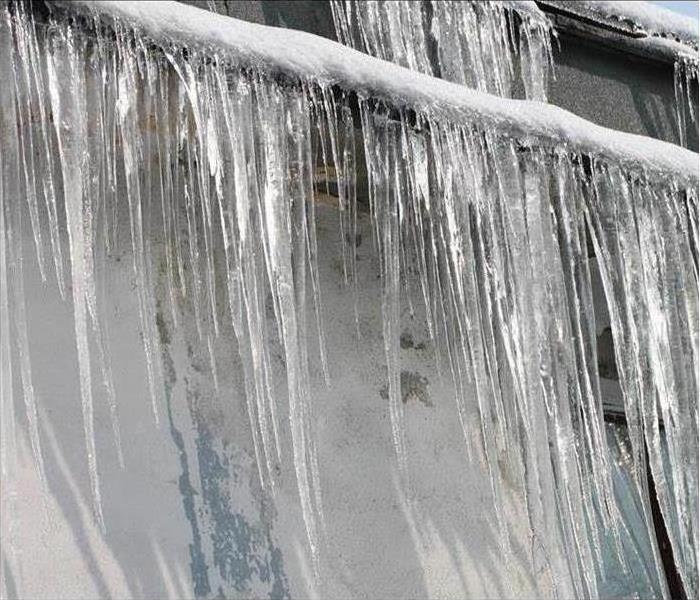 It's important to act immediately after spotting an ice dam on your property to prevent further damage!
It's important to act immediately after spotting an ice dam on your property to prevent further damage!
Winter 2024-25 officially begins Dec 21! With winter comes snow storms, and after a heavy snowfall, ice dams can form below roofs and windows around our home.
Numerous actions can be taken to prevent an ice dam from forming both before and after a snowfall. Follow these useful tips to help prevent a catastrophe:
To stop an ice dam:
Keep your attic insulated
Improve ventilation, especially in the eaves and ridge
Prevent air leaks. Caulk any gaps or openings
Install an extra barrier under the shingles to prevent water from seeping into home or building
Seal and insulate ducts
Cold temperatures can sometimes have their way of forming a dam on your property despite following these tips. Be sure to:
Clear snow from roof after every snow shower
Clear gutters of any leaves, snow, or debris
Clear around downspouts, too!
However, your safety is your first priority! Snowy and icy conditions make everything more slippery and dangerous. Do not use a ladder or attempt climbing, as you could slide off the surface or the ladder. If you find it unsafe to remove an ice dam you spot on your property, for example, call a professional immediately!
Give Team Gutierrez of SERVPRO of Rockville-Olney and Silver Spring North a call today if you have any questions or storm & water damage restoration needs. 301-340-1313.
Our crews are here 24/7 to respond swiftly!
Autumn colors are nice, but the storms... not so much!
10/3/2024 (Permalink)
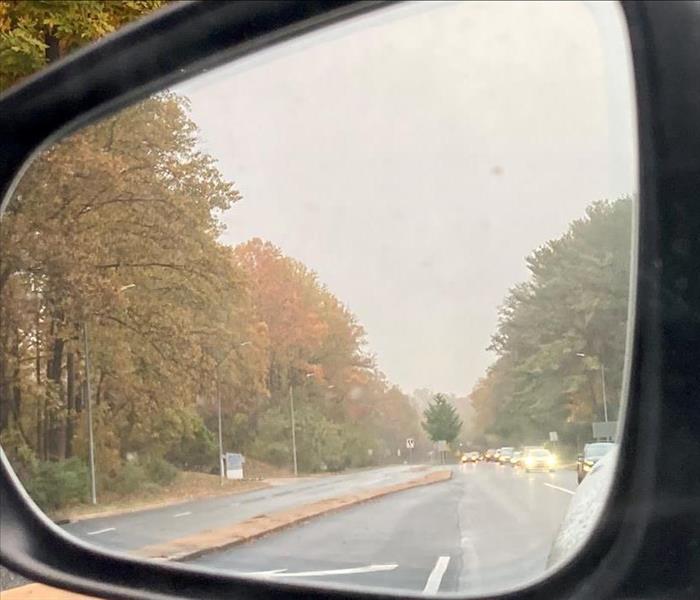 Autumn weather & colors are welcome, but not seasonal thunderstorms that can wreak havoc to property. SERVPRO of Rockville-Olney can help!
Autumn weather & colors are welcome, but not seasonal thunderstorms that can wreak havoc to property. SERVPRO of Rockville-Olney can help!
The cool weather and changing colors have arrived in Rockville, Olney, Silver Spring and the rest of Maryland, and as the warm and humidity from Summer mix with the drier air, the encounter can result in an increase of thunderstorms.
Gusty winds, heavy rainfall and lightning are among the most common characteristics of a thunderstorm. When a thunderstorm updraft has enough strength to carry water to an area with below-freezing temperatures, hailstones begin to form. When the hailstones become too heavy for the updraft to hold, they are released, and that is when hail falls to the ground.
Damages caused by the winds, rainfall, lightning and hail can have devastating effects on your property, residential and business.
Post-storm damages are not limited to, but can certainly include water, fire, and even mold damages.
If you experience any problems, either residential or commercial, Team Gutierrez of SERVPRO of Rockville-Olney and SERVPRO of Silver Spring North will get you back on your feet fast, with our crews' extensive knowledge and swift response.
If you want to ensure you don’t face any stormy issues this season, give us a call at (301) 340-1313, and we will help prepare a plan for quick response, and we can make your property "Like it never even happened."
Hurricanes and how do they affect where we live
7/1/2024 (Permalink)
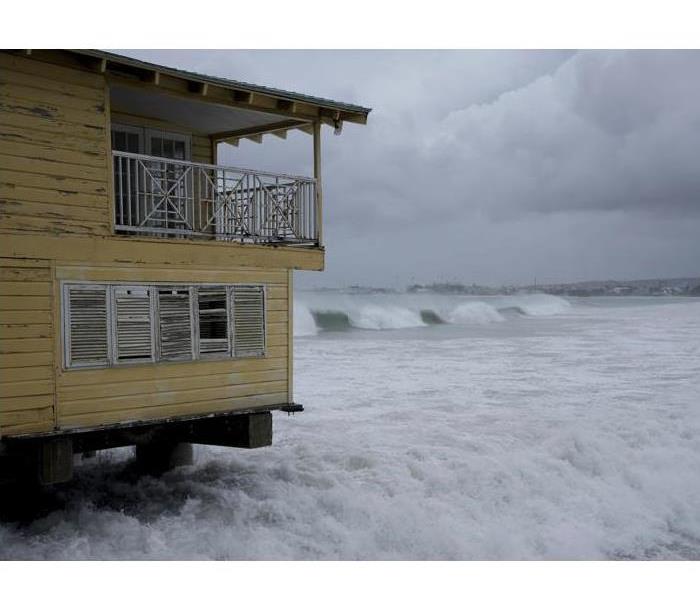 Hurricane Beryl closing in on the Caribbean islands on July 1, 2024. photo credit: Ricardo Mazalan/AP
Hurricane Beryl closing in on the Caribbean islands on July 1, 2024. photo credit: Ricardo Mazalan/AP
As the active hurricane season carries on – with Hurricane Beryl moving toward the eastern fringes of the Caribbean as an “extremely dangerous” Category 4 storm as of Monday, July 1 – it is important for our DMV area to be aware of the potential damages hurricanes can do to our homes and how our services at SERVPRO can help.
Though hurricane damage is inevitable in some places, avoiding damages beforehand can help minimize loss and expenses. Make sure to have a team from SERVPRO check your home after a hurricane to verify that your home is safe.
Prevention and Preparedness
Hurricane damage prevention does not take much time at all and can be accessed locally at places like Home Depot and Lowe’s. But what are some things that you need? Things like shutters for your windows, putting outdoor furniture in a safe space, and putting cars in garages can extremely help. Hurricanes are a tropical cyclone of winds that are intense enough to damage any property. Hurricanes can also affect where we live by damaging outdoor sheds, patios and decks, gardens and homes in general. Luckily, SERVPRO professionals are available 24/7 to come in and help restore those damages.
As suggested by the American Red Cross, it is best to have a source of power for your phone, the appropriate medicine, and a safe/sustainable floor to temporarily stay in (commonly a basement or ground level floor.)
Specific Home Affects
Hurricanes can shake your home to the point where items fall, fragile cupboards break, and pipes could be damaged. If you have trees near your house, they could potentially fall on your home. With hurricanes bringing a combined large amount of rain and winds, there’s potential damage to the roofs over our heads. This could lead to water damage and buildup of mold. Any concerns with storm cleanup, water damage restoration, mold removal, and reconstruction of damaged property can be handled by SERVPRO professionals. Here in the DMV – Washington DC, Maryland and Virginia region – SERVPRO Team Gutierrez can help.
Travel and Remediation
Make sure to have a safe place and route to get to if the hurricane is intense enough, along with a full tank of gas in your car. When coming back to your home, give us a call and we will send a team out to assess and help clean up & restore your property.
We know the stress natural disasters can put on the community and we strive to be that go-to company that can help people restore their homes not only as quickly as possible, but with the utmost quality and compassion. Give SERVPRO Team Gutierrez a call and one of our teams will be on the way to help. 301-340-1313.
Tips for returning to a flood-damaged home
5/28/2024 (Permalink)
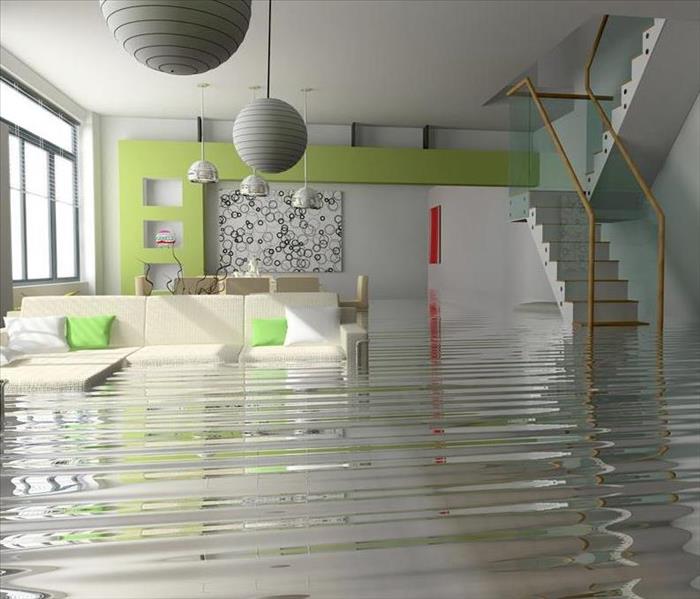 Beware that your house may be contaminated when returning home after a flood or other natural disasters.
Beware that your house may be contaminated when returning home after a flood or other natural disasters.
Water – one of life’s essentials, for without it, we simply cannot survive.
But flood and contaminated water – water from natural disasters, and from contaminated sources like sewage and overflowed toilets & such – are toxic and can cause numerous health hazards and diseases that can be fatal, if exposed.
With Spring in full swing and the Summer months just ahead, families will be vacationing and traveling away from home. Suppose there was a big storm with heavy flooding while you were away, and your home was flooded and you’ve returned to face standing water throughout the home.
It’s many homeowners’ worst nightmare. What to do?
For starters, the Centers for Disease and Control advises that, if possible, try to return home during the daytime so that you do not have to use any lights. Use battery-powered flashlights and lanterns, rather than candles, gas lanterns, or torches.
The agency also offers the following:
- If you have standing water in your home and can turn off the main power from a dry location, then go ahead and turn off the power, even if it delays cleaning. If you must enter standing water to access the main power switch, then call an electrician to turn it off. NEVER turn power on or off yourself or use an electric tool or appliance while standing in water.
- Have an electrician check the house’s electrical system before turning the power on again.
- If you smell gas or suspect a leak, turn off the main gas valve, open all windows, and leave your house immediately. Notify the gas company or the police or fire departments or State Fire Marshal’s office, and do not turn on the lights or do anything that could cause a spark. Do not return until you are told it is safe to do so.
- If the house has been closed up for several days, enter briefly to open doors and windows to let the house air out for a while (at least 30 minutes) before you stay for any length of time.
- If your home has been flooded and has been closed up for several days, assume your home has mold.
- If your home has been flooded, it also may be contaminated with sewage. Call a professional home inspector to check for contamination. If confirmed, have a licensed company remove & remediate mold and sewage. Our certified crews from SERVPRO Team Gutierrez of Rockville, Olney & Silver Spring North are especially trained for such work, and are available 24/7 to help!
FOOD. The next step is to go through your home to discard perishable items and anything that has been contaminated with standing water. On top of that list is food; throw away food that may have come in contact with flood or storm water; perishable foods that have not been refrigerated properly due to power outages; and those with an unusual odor, color, or texture. Unsafe food can make you sick even if it looks, smells and tastes normal. When in doubt, throw it out!
WATER. Food water can contaminate drinking water from your home’s faucets. Until the water is tested, use bottled or water that has been properly boiled to kill any contaminants.
Some contaminants from surface water can get into the groundwater and affect private drinking water wells and municipal water systems that use groundwater. The CDC suggests the following steps:
- Follow local guidance on whether your water is safe to drink.
- If you have a private well and live in an area with flooding, get your water tested before you use it.
- Do not use water you suspect or have been told is contaminated to wash dishes, brush your teeth, wash and prepare food, wash your hands, make ice, or make baby formula. Safe water for drinking, cooking and personal hygiene includes bottled, boiled, or treated water.
- Your state, local, or tribal health department can make specific recommendations for boiling or treating water in your area.
Until your power is restored after dryout, use generators and other electrical sources and equipment safely. Talk to your utility company about using electrical equipment, including power generators. Be aware that it is against the law and a violation of electrical codes to connect generators to your home’s electrical circuits without the approved, automatic-interrupt devices. If a generator is on line when electrical service is restored, it can become a major fire hazard. In addition, the improper connection of a generator to your home’s electrical circuits may endanger line workers helping to restore power in your area.
- All electrical equipment and appliances must be completely dry before returning them to service. Have a certified electrician check these items if there is any question.
- Never use a generator, pressure washer, or any gasoline-powered engine inside your home, basement, or garage or less than 20 feet from any window, door, or vent.
The next step is to prevent MOLD from the flood or storm water, by drying out your home. Follow these steps from the CDC:
- If you have electricity and an electrician has determined that it’s safe to turn it on, use a “wet-dry” shop vacuum (or the vacuum function of a carpet steam cleaner), an electric-powered water transfer pump, or sump pump to remove standing water. If you are operating equipment in wet areas, be sure to wear rubber boots.
- If you do not have electricity, or it is not safe to turn it on, you can use a portable generator to power equipment to remove standing water. Note: If you must use a gasoline-powered pump, generator, pressure washer, or any other gasoline-powered tools to clean your home, never operate the gasoline engine inside a home, basement, garage, carport, porch, or other enclosed or partially enclosed structures, or less than 20 feet from any door, window, or vent, even if the windows and doors are open. Such improper use can create dangerously high levels of carbon monoxide and cause carbon monoxide poisoning.
- If weather permits, open windows and doors of the house to aid in the drying-out process.
- Use fans and dehumidifiers to remove excess moisture. Fans should be placed at a window or door to blow the air outwards rather than inwards, so not to spread the mold.
- Have your home heating, ventilating, and air-conditioning (HVAC) system checked and cleaned by a maintenance or service professional who is experienced in mold cleanup before you turn it on. If the HVAC system was flooded with water, turning on the mold-contaminated HVAC will spread mold throughout the house. Professional cleaning will kill the mold and prevent later mold growth. When the service determines that your system is clean and if it is safe to do so, you can turn it on and use it to help remove excess moisture from your home.
- Prevent water outdoors from reentering your home. For example, rainwater from gutters or the roof should drain away from the house; the ground around the house should slope away from the house to keep basements and crawl spaces dry.
- Ensure that crawl spaces in basements have proper drainage to limit water seepage. Ventilate to allow the area to dry out.
The CDC and the American Red Cross offer great resources for storm and fire prevention and response. Visit their webpages for more information:
www.cdc.gov/floods/about/?CDC_AAref_Val=https://www.cdc.gov/disasters/floods
www.redcross.org/get-help/how-to-prepare-for-emergencies/types-of-emergencies/flood
Finally, when you are ready for that monstrous task of cleanup and remediation, you can rely on SERVPRO of Rockville-Olney and SERVPRO of Silver Spring North. We are the area’s water & storm damage experts, as well as mold remediation and restoration. Large or small, we will restore your water-damaged property, residential or commercial, with efficiency and detail.
Call SERVPRO Team Gutierrez 24/7 at 301-340-1313.
Now is the time to prepare for a ‘turbulent’ 2024 Hurricane Season!
5/3/2024 (Permalink)
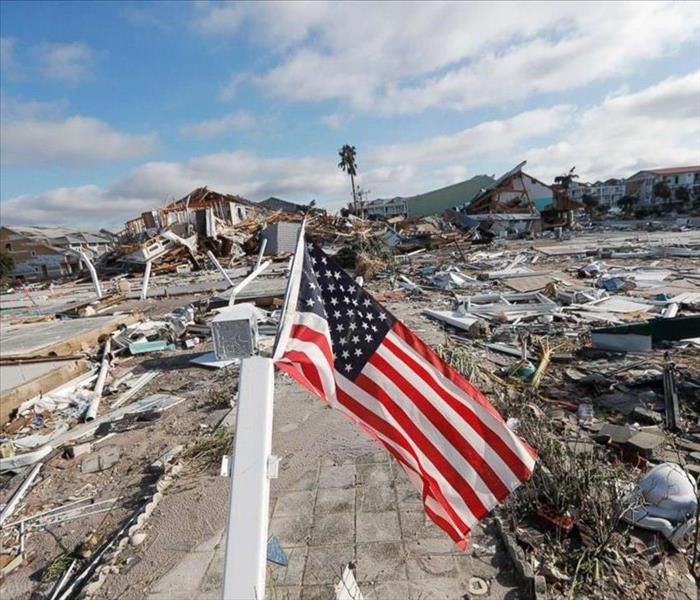 A turbulent hurricane season is predicted for 2024. Now is the time to prepare your family & property!
A turbulent hurricane season is predicted for 2024. Now is the time to prepare your family & property!
Meteorologists are predicting 2024 to be one of the most turbulent hurricane seasons on record, with 24 named storms and 11 hurricanes forecasted. Six of those hurricanes are predicted to reach Category 3 status or stronger.
“The 2024 Atlantic hurricane season is forecast to feature well above the historical average number of tropical storms, hurricanes, major hurricanes and direct U.S. impacts," AccuWeather Lead Hurricane Forecaster Alex DaSilva said in an accuweather.com article.
Jonathan Belles, a graphics meteorologist and writer for weather.com, wrote that bigger impact from the hurricanes is likely this year. “Forecasters are also worried about more landfalls this season due to a troubling setup for storm movement,” he wrote.
Unlike last season, “a stronger high-pressure system is expected to set up shop near Bermuda and the Azores, which should deflect more storms westward toward the Caribbean and the United States,” Belles wrote.
As a restoration company – SERVPRO® Team Gutierrez of Rockville, Olney & Silver Spring North, as well as our sister franchises in Prince George’s County SERVPRO of Laurel & Beltsville/Greenbelt – is always prepared for disasters, and especially Hurricane Season that begins June 1 and ends Nov. 30.
Now is a good time to prepare your family and your property to help keep you safe & minimize response time. The American Red Cross offers these Hurricane Safety tips:
Plan to Evacuate
- If advised to evacuate, do so immediately and go to a safe place.
- Know where you will go, how you will get there, and where you will stay.
- Plan well in advance if you will need help leaving or use public transportation.
- Mobile & trailer homes and recreational vehicles (RVs) cannot provide safe shelter from tropical-storm or hurricane-force winds.
Plan to Shelter Safely
- Be ready to live without power, water, gas, phone, and internet for a long time.
- Practice going to a designated safe shelter for high winds. The next best protection is a small, interior, windowless room in a sturdy building on the lowest level that is not likely to flood.
- If you are in an area that is likely to flood, designate a location on higher ground that you can move to before floodwaters reach you.
Storm & water damage in your property can cause further damage if not mitigated swiftly and properly. That’s why our SERVPRO emergency response teams are on call 24/7 to help.
We have trained & experienced manpower, state-of-the-art equipment, and tried-and-true method to restore your property to preloss condition, “Like it never even happened.” Give us a call and see why our SERVPRO brand has been consistently ranked #1 by Entrepreneur magazine in the restoration services category for 22 years. 301-340-1313.
Planning for those unexpected Spring & Summer storms
5/3/2024 (Permalink)
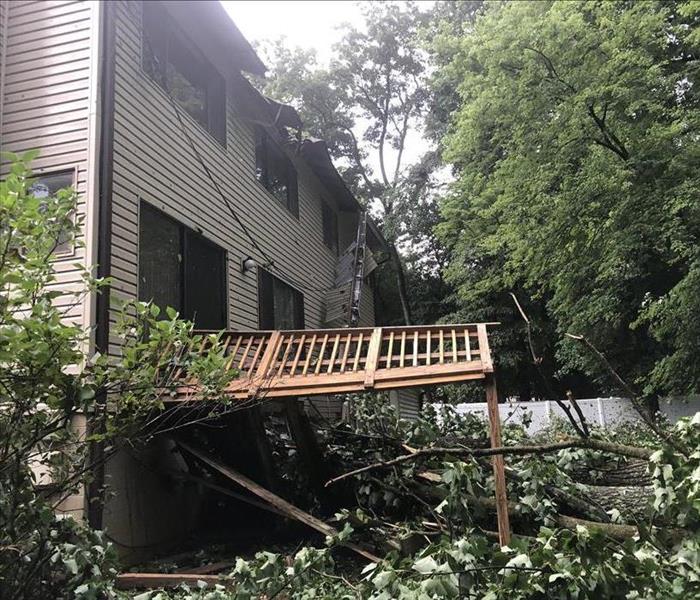 Spring & Summer storms can occur anytime. Be prepared!
Spring & Summer storms can occur anytime. Be prepared!
SERVPRO® of Rockville-Olney and SERVPRO of Silver Spring North want you to be ready for those unexpected Spring & Summer storms.
A spring or summer storm happens quite often in Maryland including our Montgomery County. There are many possibilities of damage from such storms, whether from wind, heavy rain, or lightning. Wind can cause structural damage to your home or business, heavy rain can lead to flooding and if lightning strikes on your property, it is at risk of a fire.
If you know a storm is coming, take these initiatives to ensure safety:
- Secure outdoor objects that could blow away or cause damage.
- Shutter windows and secure outside doors.
- Unplug any electronic equipment.
During the storm, remain calm and be aware.
- Use your battery-operated NOAA Weather Radio for updates from local officials.
- Avoid contact with cords.
- Stay away from windows and doors.
After the Storm, BE SAFE! It may not be storming anymore but the damage can still affect you.
- Never drive through a flooded roadway.
- Stay away from storm-damaged areas to keep from putting yourself at risk.
- Stay away from downed power lines and report them immediately to 911.
If you are caught off-guard to a dangerous storm that caused damage to your property, we have an Emergency Response Team 24/7 specially-trained to deal with the mess of a storm. Let SERVPRO Team Gutierrez be the experts you need in your time of crisis! 301-340-1313.
Spring is nice, but best to be prepared!
4/1/2024 (Permalink)
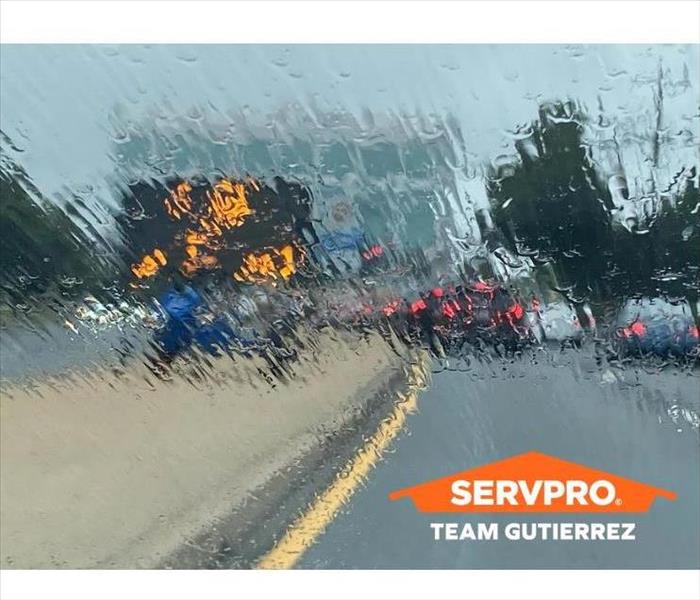 Get your property ready for those unexpected Spring & Summer rain storms!
Get your property ready for those unexpected Spring & Summer rain storms!
Ahhh! Spring... balmy weather one day; frigid to near-freeze overnight. To don a sweater or not. To bring in plants or not...
Spring weather can be unpredictable, as many of us here in the Washington, D.C. region have experienced a time or two. Remember the heavy April snowfall over a decade ago? And the wind gusts of 20-30+ mph every now and then, like the storm our DMV experienced just over the weekend at end of March 2023.
While we can’t predict when severe weather hits, we can always plan for those unexpected storms to minimize injury to ourselves and damages to our properties. A viable plan of action for storms, floods, tornadoes, even fires, can save lives and costly repairs in the aftermath of severe weather that can occur, even within the same day.
Mark Twain said it best: “In the spring I have counted one hundred and thirty-six kinds of weather inside of four and twenty hours.”
Preparing an emergency kit to keep on hand is a great start to advance planning for storms. Some items to include, as suggested by the Centers for Disease Control and Prevention, are:
- A battery-operated flashlight, a battery-operated NOAA Weather Radio, and extra batteries for both
- An emergency evacuation or shelter plan, including a map of your home and routes to safety from each room
- A list of important personal information, including:
- telephone numbers of neighbors, family and friends
- insurance and property information
- telephone numbers of utility companies
- medical information
- A 3–5 day supply of bottled water and nonperishable food
- Personal hygiene items
- Blankets or sleeping bags
- A first-aid kit, which may include:
- non-latex gloves
- assortment of adhesive bandages
- antibiotic ointment
- sterile gauze pads in assorted sizes
- absorbent compress dressings
- tweezers
- scissors
- adhesive cloth tape
- aspirin packets
Being prepared & proactive for storms and severe weather can save lives and minimize costly repairs to damaged property. Oftentimes we have little if any time to prepare for an approaching storm. For families with young children, a mock emergency drill may be a fun yet helpful activity. Show them where to go; where emergency supplies are stored; and make sure everyone in the family knows where & how to turn off the water, gas and electricity in your home.
Preparedness and swift response may save a life or two!
When all’s settled and you find your damaged properties needing cleanup & restoration, call us – SERVPRO® of Rockville-Olney and Silver Spring North – 24/7 at 301-340-1313.
We are the area’s water & storm damage experts and are always “Faster to any size disaster.” Large or small, we will restore your water-damaged property, residential or commercial, with efficiency and detail.
Team Gutierrez stands ready for storm damage response large or small
2/16/2024 (Permalink)
 Our crews at SERVPRO Team Gutierrez are always ready to respond to storm damage of any size. Count on us!
Our crews at SERVPRO Team Gutierrez are always ready to respond to storm damage of any size. Count on us!
Disasters call for swift response.
Which is why our crew chiefs & teams at SERVPRO of Rockville-Olney and SERVPRO of Silver Spring North stand ready for when & where help is needed.
Extreme cold weather, which can strike anytime in the Northeast including Washington D.C., Maryland & Virginia, can cause frozen pipes that result in water damage. The water damage can be extensive, such as those in tall buildings that can cause water to trickle down from the top and wreak havoc to ceilings and walls in addition to floorings, furniture and other items.
In homes, where pipes are unheated or partially heated, are also at risk of freezing.
Another potential hazard to consider as the snow/ice begins to melt is damage to your roof and ice dams. An ice dam is formed when snow melts unevenly on a roof and refreezes into a dam at the edge of the roof, near the eaves. This dam prevents any further snowmelt from draining off of the roof. This standing water can back up under shingles, leak into a home, and cause significant water damage to ceilings, walls, and other areas. Ice dams can also tear off gutters and loosen shingles.
Snow and ice can cause significant damage to your gutters and roof. The additional weight of snow and ice can even cause a roof to collapse. When there’s a cold snap, water can get into cracks and small spaces and expand when it freezes, causing larger cracks and more damage. The repetition of freezing and thawing cycles can cause small cracks to get larger.
Our SERVPRO experts offer these suggestions:
What you can do until help arrives
After any water damage situation, your primary focus should be safety.
- Is it safe to stay in the house?
- Electrical and "slip and fall" hazards are some of the most prevalent concerns.
- Only do activities that are safe for you to perform.
- Wet materials can be VERY heavy. Be careful!
What To Do After Flooding
- Remove excess water by mopping and blotting.
- Wipe excess water from wood furniture after removal of lamps and tabletop items.
- Remove and prop wet upholstery and cushions.
- Place aluminum foil or wood blocks between furniture legs and wet carpeting.
- Turn air conditioning on for maximum drying in summer.
- Remove colored rugs from wet carpeting.
- Remove art objects to a safe, dry place.
- Gather loose items from floors.
What Not To Do After Flooding
- Don't leave wet fabrics in place. Hang furs and leather goods.
- Don't leave books, magazines, or other colored items on wet carpet or floors.
- Don't use your household vacuum to remove water.
- Don't use television or other household appliances.
- Don't turn on ceiling fixtures if ceiling is wet, and keep out of rooms where ceilings are sagging.
How to recover damaged items after flooding
10/30/2023 (Permalink)
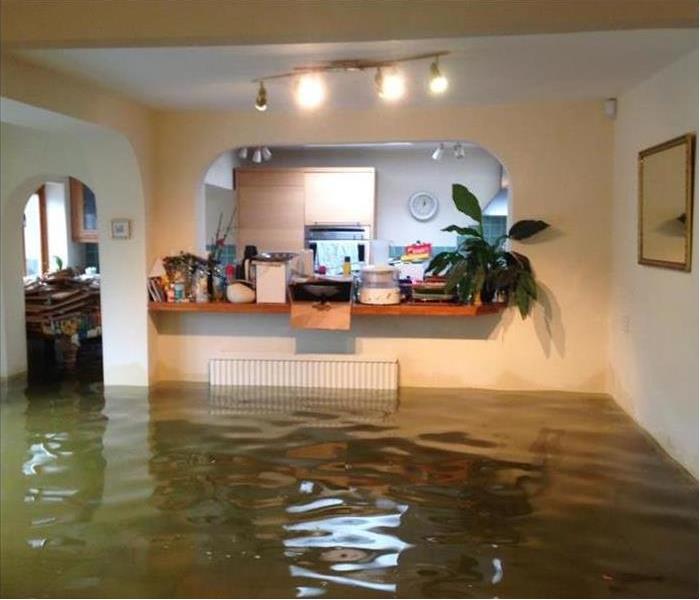 It’s essential to dry items within 48 hours after a house flood, if you want to salvage your goods.
It’s essential to dry items within 48 hours after a house flood, if you want to salvage your goods.
If you’ve ever experienced a house flood, you might have lost a few items, or maybe you lost most of your possessions depending on the extent of the waters and how long you waited to dry your furnishings, accessories and trinkets.
If you want to salvage your goods after experiencing a flood, it’s essential you dry items within a 48-hour timeframe.
We want to offer some tips & suggestions on how to salvage your items:
- Improve air circulation! Don’t contain the moisture. Instead, open windows and doors. If there are no windows or doors leading outside in the particular room, open closet and cabinet doors.
- Turn on a fan! It can either be a ceiling fan, a floor fan, or both. However, please do not plug a fan into an outlet attached to a wall that is wet or has water behind it. That’s an easy way to get electrocuted.
- Use a dehumidifier. These remove water vapor from the air. To be effective, it must be used in a contained area. Be sure to shut all doors and windows during use to prohibit more humidity from entering.
- Use a sump pump. These remove water out of house or office through a hose or pipe. They’re useful when the floodwater level is more than a couple inches deep.
- Got soaked items? Quick! Take them out of your house. Allow them to dry off in the sun. Keeping them indoors will ensure nothing ever dries up as their excessive moisture will travel to surrounding objects.
- Try a wet-dry shop vacuum. Never use a regular vacuum cleaner. A shop vac is specifically made for wet conditions.
At SERVPRO of Rockville-Olney and SERVPRO of Silver Spring North, we are water damage restoration experts. With the latest, state-of-the-art equipment and certified technicians, you can trust us to clean up and restore your property back to how it used to be! We also offer content restoration, as oftentimes our customers want to salvage and not discard their valuables, even furniture and paintings... Ask us about content restoration!
You can review our water damage restoration process here:
https://www.SERVPROrockvillesilverspringnorth.com/water-damage-restoration
Give SERVPRO Team Gutierrez a call at 301-340-1313 if we can help!
Be Prepared for Those Unpredictable Summer Storms
6/26/2023 (Permalink)
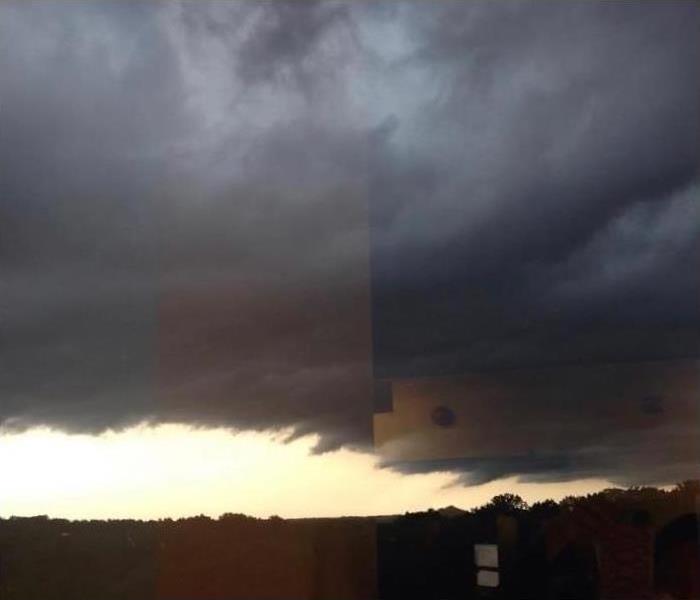 Follow these tips to secure your property for those unexpected storms in Maryland.
Follow these tips to secure your property for those unexpected storms in Maryland.
Summer in Rockville, Olney and other parts of Maryland brings lots of sunshine and pleasant warm weather. It also offers a fair share of storms.
The NOAA (National Oceanic & Atmospheric Administration) predicts a 30% chance of an above-normal season for the Hurricane 2023 season, which begins June 1 and ends Nov. 30.
Our Maryland region has seen recent storms with heavy rain and strong winds, causing trees and powerlines to fall in some counties including Montgomery & Prince George's counties. Lightning, thunder, flying debris and hail can also occur during these storms.
Just last week our emergency services team responded to a residential loss pertaining to a tree that fell on the side of a townhome during a thunderstorm. Our team tarped the affected area to prevent further damage to the home. This emergency tarping prevented other elements, such as rain and dust, from entering inside the cracks and openings of the siding, which the fallen tree caused.
Here are a few tips to make your property more secure during a storm:
Get your roof and foundation checked out. Are there any cracks in your roof? If so, call a professional to have it repaired ASAP.
Remove any tree branches that pose risk to breaking a window, for example. Getting a tree trimming before the summer storm season begins is a wise idea.
Invest in storm windows.
Bring all patio furniture, grills, etc. indoors before the storm hits.
Tightly secure outdoor items you cannot bring indoors.
Bring potted plants inside until the storm passes over.
If you have a garage, park your vehicle inside it before the storm hits.
If you must evacuate due to the storm, secure and board up windows.
We hope you find these tips helpful and wish you an enjoyable and safe summer!
SERVPRO® of Rockville-Olney – along with our sister franchises SERVPRO® of Silver Spring North, SERVPRO® of Laurel and Greenbelt NE/Beltsville E – is a full-service restoration company that specializes in the cleanup, restoration & reconstruction of residential and commercial property after a fire, smoke or water damage. We also mitigate mold & mildew, and biohazards from your home or business.
Call us 24/7 at 301-340-1313 and let us help make it "Like it never even happened."
Keeping Your Pets Safe During Storms
10/18/2022 (Permalink)
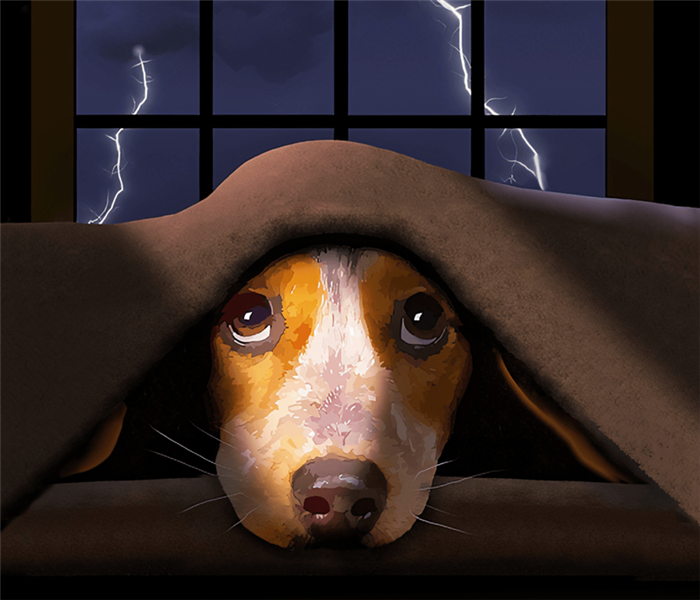 Follow these tips to help keep your pets safe during storms
Follow these tips to help keep your pets safe during storms
Like us, pets can face a lot of anxiety during a storm.
If you know a storm is approaching, or see the first sign of one, immediately bring your pet(s) indoors. Animals can become disoriented and panicky when witnessing intense conditions, and it’s not uncommon for them to wander away under these circumstances.
Also, if a veterinarian has prescribed your pet(s) any anxiety medication, administer the medication to them as soon as possible.
It’s also important your pets wear ID tags, or better yet, are microchipped. If they do get lost, they will be much easier to identify and more quickly returned to you.
It’s very common for your pet(s) to become frightened when they hear thunder or feel the house shake due to high winds. In case of emergency, in an instance where you have to pick them up and flee your home, be sure to remember their favorite hiding spaces. This way, you won’t waste time wandering around your home in search of them.
If you are leaving your home, it’s best to bring your pet(s) with you. Create a list of surrounding lodging choices that are pet-friendly. See if you could drop off your furry friend(s) at a friend or relative’s home, or call to see if any boarding kennels have space.
If you are staying home, keep your pets away from windows as much as possible. In a state of panic, your pets could either try jumping out (however, your windows should definitely be shut), or something may cause your window to shatter, sending pieces of broken glass everywhere.
In the event heavy rains begin to come inside your home, and it begins to flood, move yourself and your pet(s) to the highest location inside your home; they can take shelter in cabinets or shelving.
A few tips include moving your pet inside a room with no carpeting, in case of bathroom emergency, and having a fresh supply of water readily available, as you do not want your pet to dehydrate. Taking them to a veterinarian would be nearly impossible in the case of a serious weather crisis.
Additionally, make sure there are no poisonous substances or baits your pet can get ahold of. When taking shelter, your pet(s) might either be in an unfamiliar room that you are not used to them being in, or they might get bored and begin getting into boxes, bins, or shelves. Again, if they consume something that will cause them to fall ill, it would be nearly impossible for you to bring them to the veterinarian.
Lastly, consider creating a first-aid kit for your pet(s). ASPCA has created a list of items you should include in your own kit. Check out their link:
https://www.aspcapro.org/resource/how-make-pet-first-aid-kit






 24/7 Emergency Service
24/7 Emergency Service













